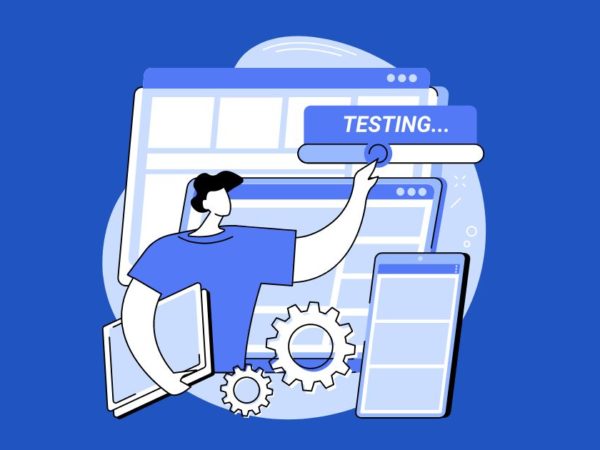Hypothesis testing is a method utilized by many analysts in private and government sectors for making probable statements or assumptions about population data.
If you have been dealing with or studying population data, you must have come across this vital tool of hypothesis testing.
Many methods can be employed to make assumptions, but not all provide higher accuracy.
And if you aren’t sure about your data but still want to use it, it could be risky for your organization.
Hypothesis testing is a good strategy to achieve a higher level of accuracy. It has been instrumental in population analysis.
In this article, I will discuss what hypothesis testing is, how it works, its benefits, and its use cases.
So, without further ado, let’s start!
What is Hypothesis Testing?
Hypothesis testing is a statistical inference method analysts use to test whether the available population data sufficiently supports a given hypothesis and make assumptions out of it.
Through this method, analysts can easily assess a hypothesis and determine how accurate the assumption is based on the data at hand.
<img alt="YouTube video" data-pin-nopin="true" data-src="https://kirelos.com/wp-content/uploads/2023/02/echo/maxresdefault.jpg63fc61168e201.jpg" height="720" nopin="nopin" src="data:image/svg xml,” width=”1280″>
In simple words, it is a testing process based on inferential statistics that allows you to come to a verdict about population data based on collected sample data.
In general, it is almost impossible for analysts to find properties or any particular parameter of the entire population. But through hypothesis testing, you can make an informed prediction and decision based on the sample data and its accuracy.
Types of Hypothesis Testing
The different types of hypothesis testing are:
- Null Hypothesis: The statistics show that the sample data is abrupt, and there is no correlation between the two variables in the given sample data.
- Alternative Hypothesis: It demonstrates the primary thesis and opposes the null hypothesis. It is the main driving force in the testing process because it shows a correlation between two variables in sample data.
- Non-Directional Hypothesis: This type of hypothesis testing serves as a two-tailed hypothesis. It depicts that there is no direction between two variables in sample data and that the true value is not the same as the predicted value.
- Directional Hypothesis: Directional hypothesis depicts some relation between two variables. Here, one variable in a sample data can influence the other variables.
- Statistical Hypothesis: It helps analysts evaluate whether the data and value satisfy a certain hypothesis. It is highly useful in making statements and assumptions regarding the outcome of a sample population parameter.
Next, let’s discuss methods of hypothesis testing.
Methods of Hypothesis Testing
In order to assess whether a specific hypothesis is true or not, as an analyst, you will need a lot of plausible evidence to conclude. In this testing process, a null and alternative hypothesis is set up before starting the assessment.
Hypothesis testing doesn’t involve just a single method but many to assess whether the sample data is favorable. As an analyst, you have to consider the data and sample size and choose which hypothesis testing method suits you.
Normality Testing
It is a standard hypothesis testing method for analyzing regular distribution in sample data. During the testing process, whether the grouped data points around the mean are below or above the mean is checked.
In this statistical testing, the chance of points going above or below the mean is equally likely. A bell curve is formed, and it is equally distributed on both sides of the mean.
Z-Test Testing
It is another type of hypothesis testing utilized when the population data is normally distributed. It tests that the mean of two separate population parameters are different when the variance of the data is known to you.
During analyzing population data, it is highly likely you will utilize this type when the data sample size is more than thirty. Moreover, the central limit theorem is another reason that makes Z-Test suitable, as the theorem states when sample sizes increase, the samples are normally distributed.
T-Test Testing
T-Test hypothesis testing will be used by you when the sample size is limited and is usually distributed. In general, when the sample size is below 30, and the standard deviation of the parameter is unknown to you, it is mainly applied.
When you do a T-Test, you do it to calculate the confidence intervals of specific population data.
Chi-Square Test
The chi-square test is a popular hypothesis-testing process that is often used to assess the fitness and integrity of a distribution of data.
However, the main reason you will utilize this hypothesis type is when you want to test the population variance against a population variance of an assumed or known value. Different Chi-Square tests are conducted, but the most common type is the Chi-Square test of variance and independence.
ANOVA Testing
Abbreviated as Analysis of Variance, it is a statistical testing method that helps compare the data sets of two samples. However, it allows you to compare more than two means at a time.
It also explains a dependent variable and an independent variable of sample data. The usage of ANOVA is quite similar to the use of Z-Test and T-Test, but the latter two are limited to only two means.
How Does Hypothesis Testing Work?
Every analyst who utilizes hypothesis testing utilizes random sample data for analysis and measurement. During the testing, the random sample data are utilized for testing the null hypothesis and alternative hypothesis.
As we have discussed earlier, the null hypothesis and alternative hypothesis are entirely mutually exclusive, and during the outcome of testing, only one can be true.
However, there are some cases when the null hypothesis is rejected; the alternative hypothesis is not always true.
p-value: While the testing process commences, the p-value or probability value is involved, and it shows whether the result is significant or not. Not only that, but the p-value also shows the probability of error occurrence in dismissing or not dismissing a null hypothesis during the testing. The resulting p-value is either 0 or 1, which is then compared with the significance level or alpha level.
The significance level here defines the acceptable risk while rejecting a null hypothesis during the testing. It is important to remember that the result of the hypothesis test can lead to two types of errors:
- Type 1 error occurs when the test result dismisses the null hypothesis even though it is true.
- Type 2 error appears when the null hypothesis is accepted by the sample result despite being false.
All the values which cause the rejection of the null hypothesis are stored in the critical region. And it is the critical value that separates the critical regions from others.
Steps to Perform Hypothesis Testing
Hypothesis testing majorly involves four steps:
- Define Hypotheses: In the first step, your job as an analyst is to define the two hypotheses so that only one can be true. The null hypothesis will indicate there is no difference in mean BMI, while the alternative hypothesis will state that there is a significant difference in mean BMI.
- Plan: In the next step, you will need to design an analysis plan on how you can analyze the sample data. It is vital that you should do sampling and collect the sample data to make sure it is designed to test your hypothesis.
- Analyze Sample Data: After deciding how you will evaluate the data, it is time to commence with the process. You will have to analyze the sample data physically so that there is no redundancy. While analyzing the data, you should check that the samples are independent of each other and that both sample sizes are large enough.
- Calculate Test Statistics: In this stage, you will have to calculate the test statistics and find the p-value. The p-value will be determined by assuming that the null hypothesis is true.
- Assess the Result: In the final step, you will need to assess the result of the hypothesis test. Here, you will decide whether to reject the null hypothesis or declare its plausibility based on the sample data.
Now, we will explore the benefits of hypothesis testing.
Benefits of Hypothesis Testing
The benefits of hypothesis testing are:
- It helps you analyze the strength of your claim on a data decision.
- As an analyst, it allows you to create a reliable environment for deciding on sample data.
- It lets you determine whether the sample data involved in hypothesis testing is statistically significant.
- It is beneficial for assessing the reliability and validity of test outcomes in any systematic testing process.
It helps you in extrapolating the data from a sample stage to a larger population depending upon the requirement.
Use Cases of Hypothesis Testing
Hypothesis testing is utilized in various sectors to guess sample data’s accuracy appropriately. Some real-world examples of hypothesis testing are:
#1. Clinical Trials
Hypothesis testing is widely utilized during clinical trials because it helps medical professionals decide whether a new drug, treatment, or procedure will be effective or not based on sample data.
A doctor may think that a treatment might alleviate potassium levels in some patients. The doctor may measure the potassium level of a group of patients before doing the treatment and check the level again.
Next, the doctor performs hypothesis testing where H0: Uafter = Ubefore, and it denotes the potassium level is the same as before after applying the treatment. Another hypothesis indicates Ha: Uafter < Ubefore, meaning the potassium level has decreased after applying the treatment.
So if the p-value is less than the significance level, then the doctor can conclude that the treatment can lower the potassium level.
#2. Manufacturing
Hypothesis testing is utilized in manufacturing plants to help supervisors decide whether the new method or technique is effective or not.
For instance, some manufacturing units may use hypothesis testing to find whether the new method is helping them to reduce the number of defective products per batch. Suppose the number of defective products is 300 per batch.
The manufacturer has to determine the mean for the total number of defective products produced before and after using the method. They may perform hypothesis testing and use hypotheses H0: Uafter = Ubefore, where the mean of defective products produced after applying a new method is the same as before.
Another hypothesis shows that HA: Uafter is not equal to Ubefore, meaning the total number of defective products produced after applying the new method is not the same.
After the test, when the p-value is less than the significance level, then the manufacturing unit can conclude that the number of defective products produced has changed.
#3. Agriculture
Hypothesis testing is often used to find out whether fertilizer or pesticide is causing growth and immunity in plants. Biologists may use the testing to prove that a certain plant might grow more than 15 inches after applying the new fertilizer.
The biologist might apply the fertilizer for one month to gather sample data. When the biologist performs a test, one hypothesis is H0 U=15 inches, which indicates that the fertilizer causes no enhancement to the mean growth of the plant.
Another hypothesis shows HA: U> 15 inches, meaning the fertilizers cause enhancement to the mean growth of the plant. After testing when the p-value is less than the significance level, the biologist can now prove that fertilizers cause more growth than before.
Learning Resources
#1. Statistics: A Step-by-Step Introduction by Udemy
Udemy is offering a course on statistics wherein you will learn a step-by-step introduction to statistics, covering hypothesis testing. This course has examples and lessons from an ex-Google data scientist to help you master confidence intervals, hypothesis tests, and more.
#2. Essential Statistics for Data Analysis by Udemy
This Udemy course on essential statistics for data analysis will help you learn statistics with real-world projects, fun activities, hypothesis tests, probability distributions, regression analysis, and more.
#3. Statistics for Data Science and Business Analysis
This course on statistics for data science and business analysis is offered by Udemy that will help you learn hypothesis testing. It covers different statistics topics, enabling data scientists and business analysts to learn and master them. It covers inferential and descriptive statistics along with regression analysis.
#4. Hypothesis Testing by Jim Frost
This book is available on Amazon and is an intuitive guide to help analysts make data-driven decisions.
It covers the working of hypothesis tests, why you need them, how to effectively use confidence intervals, p-values, significance levels, and many more topics.
#5. Hypothesis Testing by Scott Hartshorn
This book is unique with its visual examples and is best for beginners seeking a quick guide on hypothesis testing.
It will introduce you to the significance of statistics, types, and their working. It doesn’t need you to have previous in-depth knowledge of statistics but explains everything intuitively.
Final Word
Hypothesis testing helps verify an assumption and then develop statistical data based on the assessment. It is being utilized in many sectors, from manufacturing and agriculture to clinical trials and IT. This method is not only accurate but also helps you make data-driven decisions for your organization.
Next, check out the learning resources to become a business analyst.
![Kirelos Blog Hypothesis Testing: What, How and Why [+ 5 Learning Resources] Hypothesis Testing: What, How and Why [+ 5 Learning Resources] Test Management](https://kirelos.com/wp-content/uploads/2023/02/24060/hypothesis-testing-what-how-and-why-5-learning-resources-950x385.png)


